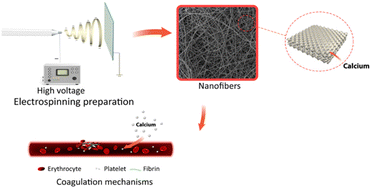Gelatin/calcium chloride electrospun nanofibers for rapid hemostasis
Abstract
Blood coagulation is the body's main defense to bleeding caused by trauma and is divided into endogenous and exogenous pathways. Calcium ions play a very important role in the process of blood coagulation, as the ions activate the many enzymes that are required for coagulation. In this paper, gelatin hemostatic membranes containing calcium ions were prepared by electrospinning. The fibers were characterized with scanning electron microscopy, Fourier transform infrared spectroscopy, and X-ray diffraction. The biocompatibility and coagulation processes using the calcium ion-containing gelatin fibrous membranes were evaluated in vitro with dynamic whole-blood coagulation tests, hemolysis tests, coagulation time tests, and platelet adhesion tests. It was demonstrated that the calcium ion-containing gelatin membranes had lower hemolysis rates and shorter clotting times than commercially available hemostatic sponges and hemostatic gauzes. In vivo hemostasis experiments were also conducted on the tail vein and liver of mice. Animal experiments demonstrated that the incorporation of calcium ions into the electrospun gelatin membranes promoted platelet aggregation, ensured adhesion of the electrospun membrane to the wound and reduced the bleeding volume and hemostasis time. The composite calcium ion-gelatin electrospun membranes exhibited good in vivo and in vitro hemostatic abilities and accelerated blood clotting by stimulating the coagulation pathway to promote platelet aggregation at the wounds and the formation of mature blood clots for a new approach for acute trauma treatment.



 Please wait while we load your content...
Please wait while we load your content...